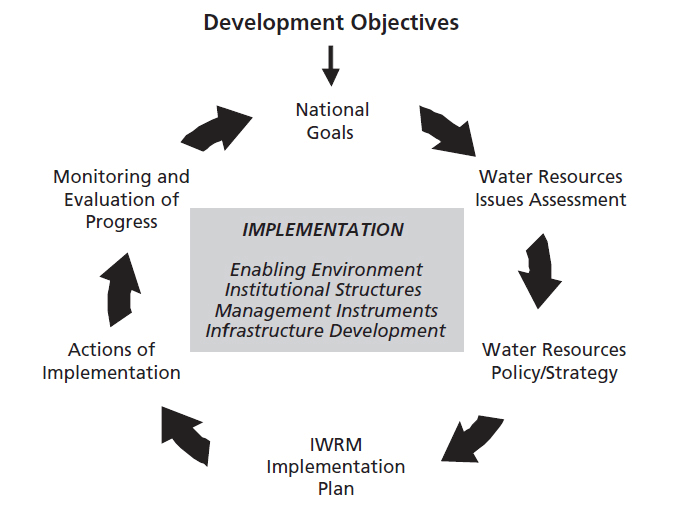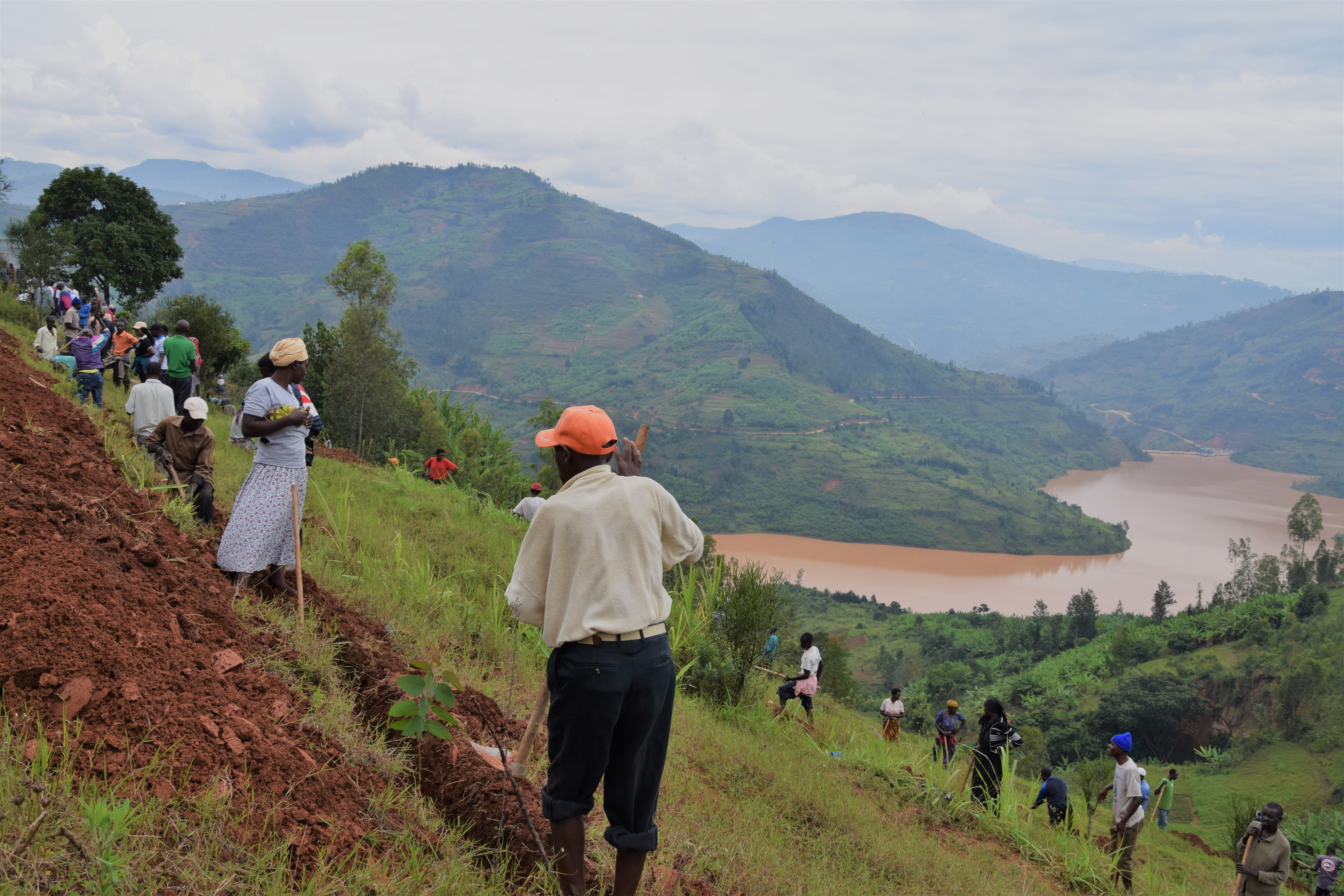Integrated Water Resources Management
Integrated Water Resources Management (IWRM) has been adopted by the Government of Rwanda as its overall approach to the national water resources policy. IWRM is also a key lever in the Green Growth and Climate Resilience Strategy.
The Global Water Partnership (GWP) has developed an IWRM toolbox. The GWP IWRM framework is internationally accepted as the standard. Rwanda also refers to the IWRM toolbox for working with IWRM.
Integrated water resources management (IWRM) has been defined by the Global Water Partnership (GWP) as a process which promotes the coordinated development and management of water, land and related resources in order to maximise economic and social welfare in an equitable manner without compromising the sustainability of vital ecosystems. IWRM is not an end point, but a continuous process of participation, learning and adaptation.

The IWRM framework consists of three pillars:
- Economic efficiency in water use
- Equity
- Environmental and ecological sustainability.
Social equity means ensuring equal access for all users (particularly marginalised user groups) to affordable water to sustain human well being. The right of all users to the benefits gained from the use of water also needs to be considered when making water allocation. Economic Efficiency means bringing the greatest benefit to the greatest number of users possible with the available financial and water resources. The economic value is not only about price – it should consider current and future social and environmental costs and benefits. Ecological Sustainability requires that adequate water (and land) is allocated to ecosystems for their natural functioning.
Water also carries powerful cultural, symbolic and spiritual values in societies that have to be taken into account in each specific context and culture. The landscape in the catchment strongly relates to the identity of its habitants.
The IWRM challenge is to integrate these pillars, focusing on key areas that affect how water resources are managed: the enabling environment, the institutional framework, and management roles. IWRM must be tailored to each institutional environment and local development context.

The Global Water Partnership IWRM toolbox focuses on the following elements:
Tools A identify what are some of the founding policy, legal, and financial structures that are promoted by IWRM. These first steps are about providing an Enabling Environment, which clarifies the rights and assets of all stakeholders, while ensuring for environmental quality.
Tools B are concerned with identifying some key social, economic, and political systems that are conducive to strong Institutional Arrangements. These entities act as incubators and channels for good and effective water governance to materialize.
Tools C, Management Instruments, lay out elements and methods that enable and help decision makers to make rational and informed choices between alternative actions, in accordance to IWRM principles.
A: Enabling environment
- Regulatory framework
- Policies and plans
- Sector funding
B: Institutional framework:
- Organisations and their capacity (management capacity; technical capacity)
C: Management instruments:
- Planning framework for IWRM
- Implementation of structural interventions
- Knowledge base
- Disaster risk management
- Inter-agency coordination mechanisms
- Social development and safeguards
- Environmental safeguards
The GWP IWRM toolbox is accepted as guiding the implementation of integrated water resources management in Rwanda. However, the tools are considered conceptual and useful for water basin and national level and less at sub-catchment level. Catchment management projects (example Malawi) tend to combine the governance of IWRM with practical field interventions to improve land, water, and agricultural practices such as: catchment restoration and protection, water and sanitation, climate smart agriculture, flood- and drought management, water harvesting, erosion control and livelihood diversification. For each subject refined tools and guidelines have been developed and tested by expert organizations.
Further reading:
Global Water Partnership (GWP): IWRM toolbox
Catchment management Malawi: Tools, guidelines and training modules
Catholic Relieve Services (CRS) Pocket guide for water management
ICLEI Local Government for sustainability Local government and IWRM
UN, Water for Life Decade: useful IWRM Documents
e-Learning site: Rehabilitation and livable places
Video of the Vatican on Cultural, spiritual values of water
